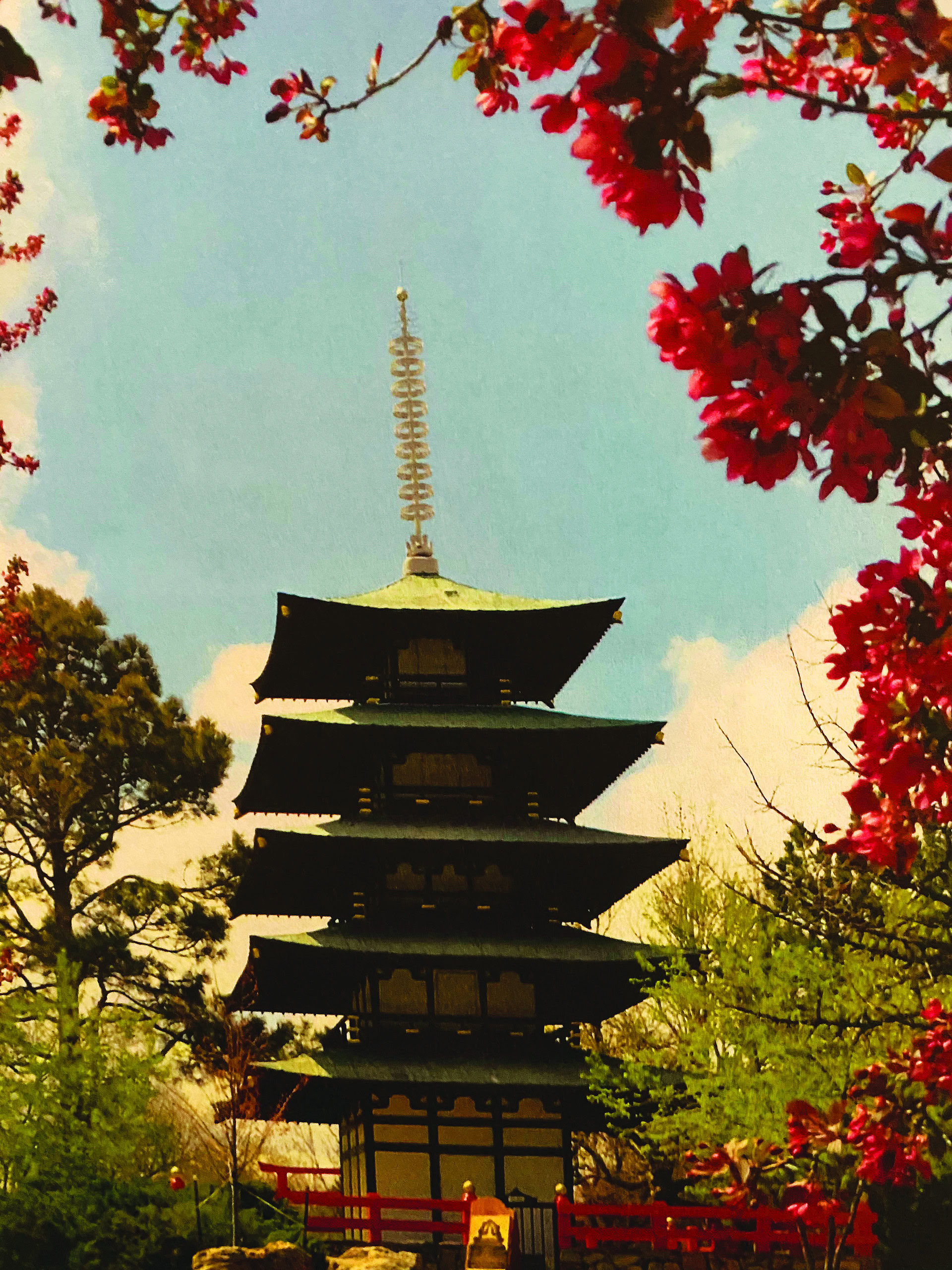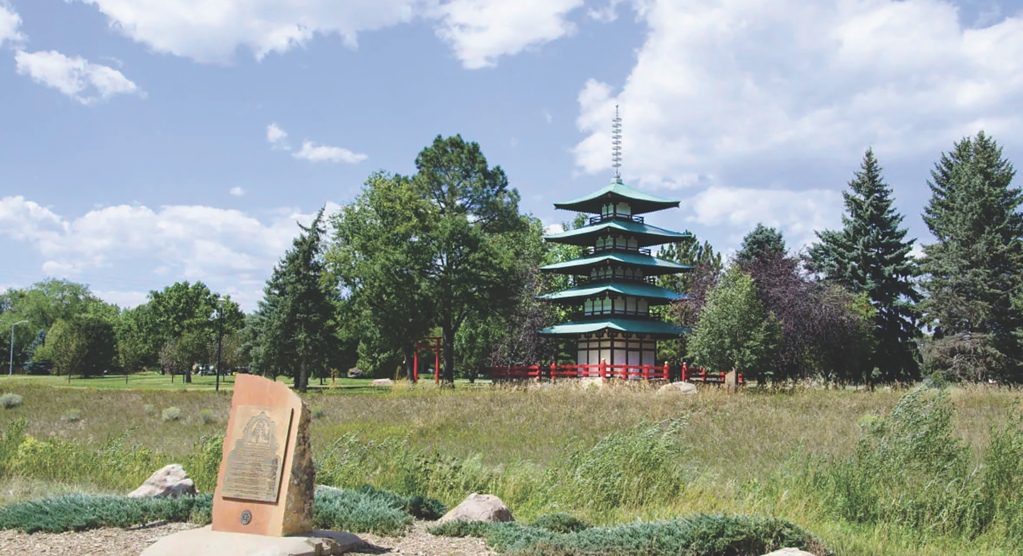
Have you ever driven through a city and wondered about the significance of a landmark? Constructed in 1973, the Tower of Compassion at Kanemoto Park was one of those landmarks for me when I first took my daughter to the pool there in 2015.
The tower was donated to the city by the Kanemoto family, members of whom have lived and worked in the area since 1919 and played a significant role in the formation of modern-day Longmont.
“Our parents gave the Tower of Compassion to the community as an expression of gratitude for their unwavering friendship, support and opportunities shown our families even during World War II,” Ken Kanemoto wrote in an email to Boulder Weekly.
Goroku Kanemoto immigrated from Hiroshima, Japan, to the United States through Mexico in 1908, beginning as a worker on the railroad. He came to Colorado via train in 1910 and settled in Longmont in 1919 with his wife, Setsuno Nakasaki, and their three children: Jimmie, George and Faith.
The family rented an 80-acre farm to grow vegetables and beets. Eventually, they earned enough money to build a family farm where the park now stands.

When their father Goroku died in an automobile accident in 1935, eldest son Jimmie and youngest child George took over the family business. They expanded, eventually purchasing 340 acres in south Longmont and selling produce at the Freshway Market. They also began more entrepreneurial endeavors including the building of Southmoor Park, a 700-home subdivision annexed into the city in 1961, and the Kane Manufacturing and Supply Company.
Life during wartime
Between 1942 and 1945, the United States government incarcerated more than 10,000 Japanese Americans at a camp in southeastern Colorado, one of 10 internment sites in the U.S. Discrimination and violence against Japanese Americans was common.
The Kanemotos were not detained, but Jimmie was reclassified from an American citizen to an enemy alien, according to reporting from the Longmont Daily Times-Call. Japanese-American Longmont residents “were forced to register with the sheriff, surrender their guns and cameras and lose their insurance,” a 1998 article states.
Despite this, Jimmie Kanemoto spoke of the kindness he and his family felt from the city and its inhabitants, during and after the war, and of Colorado’s governor, Ralph Carr. Carr opposed the detention of Japanese Americans and welcomed them to the state.

“People were very grateful to Colorado and then-Gov. Ralph Carr, who stood by the words of the Constitution,” Kanemoto was quoted as saying in the Times-Call. “While it was a very difficult time, we are appreciative of the people of Longmont and the comfort they shared with the Japanese-American families.”
In 1966, the Kanemoto family donated land for a seven-acre city park within the Southmoor neighborhood they had built, to be named for their father. An additional 10 acres was gifted to Longmont by the Kanemoto family, including property for a Buddhist temple, fire station, St. Stephen’s Episcopal Church, Burlington Elementary School and the St. Vrain Greenway.
The Tower of Compassion was commissioned in 1972 by Jimmie and George. A five-story pagoda in the style of a traditional Japanese temple, each level stands for a branch of compassion — love, empathy, understanding, gratitude and selfless giving.
“It is heartwarming to see residents, visitors and organizations still gathering around the Tower of Compassion and learning the meaning behind each level,” Ed wrote in an email. “Our parents originally built the Tower as a symbol of our gratitude to the citizens of Longmont for how kindly we were treated during WWII, but they would be very pleased to know that the lessons of love, empathy, understanding, gratitude and selfless giving are represented by the Tower are still being shared with so many people.”
Completed in 1973, the tower celebrated its 50th anniversary last year. On July 20, 2024, it became a locally designated landmark. (Buildings must be 50 years old to receive this distinction, along with possessing architectural, historical and geographical importance.)
“Recognizing an important building or structure is one way we can preserve and highlight important events in the history of our community,” Longmont Historic Preservation Commission (HPC) chairman Steve Lane wrote in an email to Boulder Weekly.
Besides adding a layer of protection, the historic designation unlocks funding from grants through History Colorado and other organizations to help with repairs and maintenance for years to come. The tower is managed by the city’s parks, open space and trails division; any changes must be approved by the preservation commission.
“It means so much for us to know that the Tower will be protected and preserved in the future,” Ed Kanemoto, son of Jimmie Kanemoto and Chiyo Miyasaki, wrote in an email to Boulder Weekly.

Timeless lessons
All three Kanemoto children have passed on: Jimmie in 2006, Faith in 2007 and George in 2009. But their children still live in Longmont and visit the tower frequently to remember their loved ones.
“To us, the Tower is a reminder of our amazing parents and grandparents,” wrote Ed Kanemoto. “They started with nothing, but their hard work, honesty and involvement in the community brought them success that has been passed down to their children and grandchildren.
Kanemoto Park looks different from when it was first built. Playground equipment, benches and the pool have been installed and remodeled. Groves of trees surround the tower today along with a torii gate leading to the Kanemoto Memorial Cherry Tree Grove.
The brief blooming season of the cherry blossom symbolizes the impermanence of life and beauty of the present moment. While the aesthetic around the tower has changed, its message remains the same.
“In this time of heightened division,” wrote HPC chairman Lane, “the Tower of Compassion is a tangible symbol of a time that despite pressure to be alienating, people from very different backgrounds made deliberate choices to be supportive of one another.”
Read more about Longmont from Boulder Weekly
